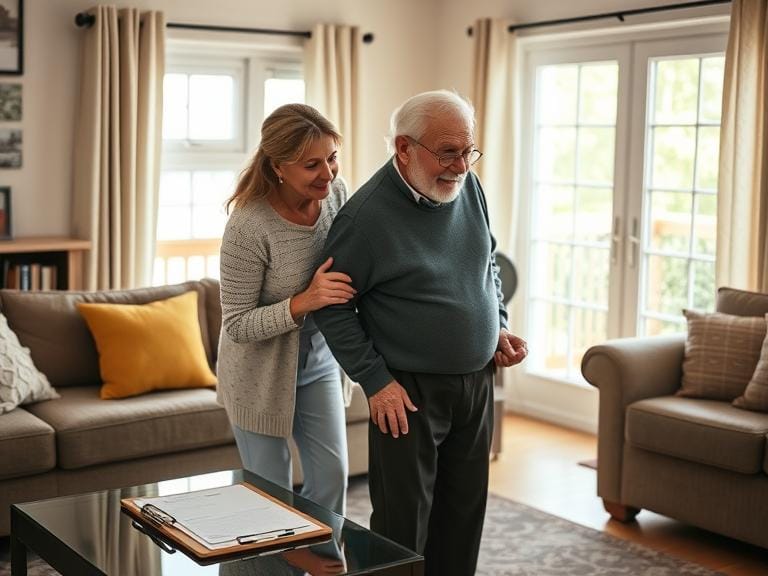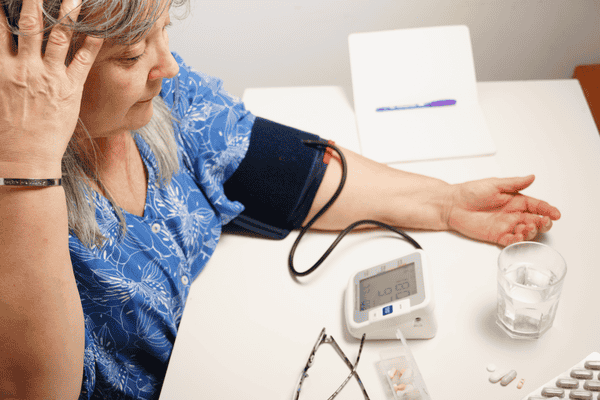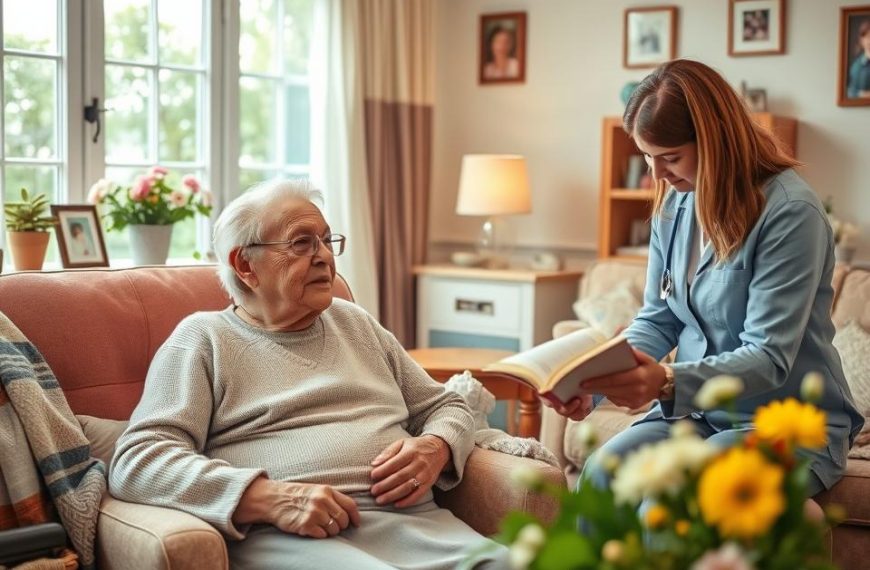When David’s daughter noticed her 78-year-old father struggling to carry his grocery bags—something he’d done effortlessly for decades—she initially attributed it to “just getting older.” However, after observing him hesitate before climbing stairs and needing extra time to rise from his favorite armchair, she realized something more significant might be happening. Her intuitive observations were actually identifying early signs of sarcopenia, demonstrating how family members often serve as the first line of detection for this critical age-related condition.
This scenario plays out in countless households worldwide, where loved ones witness the gradual decline in strength and function that characterizes sarcopenia. The key difference between inevitable aging and pathological muscle loss lies not just in recognition, but in taking action. As caregivers and family members, you possess a unique advantage in detecting sarcopenia early—you see your loved ones daily and can notice subtle changes that clinical visits might miss.
Why Family Detection Matters More Than You Think
Family members occupy a unique position in sarcopenia detection because they observe daily functional changes that brief medical appointments often miss. Unlike healthcare providers who see patients periodically, you witness the gradual evolution of strength and mobility challenges as they develop over time.
Research consistently demonstrates that individuals identified and treated in the early stages of sarcopenia experience significantly better outcomes than those diagnosed after severe functional decline has occurred. Early intervention can slow progression, improve existing function, and prevent the cascade of complications that make advanced sarcopenia so devastating. The difference between early and delayed intervention often determines whether someone maintains independence or requires assisted living.
Dr. Maria Rodriguez, a geriatrician with over two decades of experience, emphasizes the importance of family observations: “Family members often provide the most accurate assessment of functional decline because they witness the gradual changes that patients themselves might not recognize or might adapt to unconsciously.”
Your role as a family member or caregiver isn’t to diagnose sarcopenia—that’s for healthcare professionals. Instead, your mission is to recognize concerning patterns and advocate for appropriate evaluation when needed. This vigilant observation, combined with simple assessment tools you can use at home, creates a powerful early warning system.
Daily Life Warning Signs: What to Watch For
Observable Changes That Demand Attention
The most telling signs of developing sarcopenia often emerge during routine activities that previously posed no challenge. Learning to recognize these patterns can help you identify problems before they become crises.
Struggling with Everyday Objects
Pay attention when your loved one begins having difficulty lifting objects that were once manageable. This might include grocery bags, laundry baskets, grandchildren, or even lighter items like books or dishes. These challenges don’t develop overnight but gradually worsen as muscle strength declines, making them easy to overlook until they become pronounced.
One family member shared her experience: “Mom had always been the one to rearrange furniture and carry heavy items, but I started noticing she’d ask for help with things she used to handle alone. At first, I thought she was just being cautious, but then I realized she genuinely couldn’t manage the weight anymore.”
Mobility Changes and Movement Difficulties
Stair climbing difficulties represent another crucial warning sign that families should monitor carefully. Watch for the transition from bounding up stairs to needing the handrail, taking breaks, or avoiding stairs altogether. These changes reflect significant alterations in leg muscle strength and cardiovascular function.
Similarly, trouble rising from chairs—particularly low or soft seating—indicates declining power in the large muscle groups essential for mobility and independence. Notice if your loved one starts using their arms to push themselves up from chairs, needs multiple attempts to stand, or avoids certain seating altogether.
Walking and Balance Concerns
Walking speed changes offer another window into muscle health that families can easily observe. When someone who previously walked briskly begins taking smaller steps, moving more slowly, or requiring frequent rest breaks during activities they once completed easily, muscle weakness may be contributing to these changes.
Balance problems become increasingly apparent as sarcopenia progresses. You might notice your loved one grabbing furniture or walls for support, experiencing near-falls, or demonstrating unsteadiness when changing positions. These balance changes reflect not only muscle weakness but also the loss of quick, powerful muscle responses needed to prevent falls.
Physical Appearance and Energy Patterns
Visual changes in muscle mass become apparent in advanced cases, though these signs typically develop after functional changes have already begun. Clothing that once fit properly may appear loose, particularly around the arms and thighs where muscle loss is often most noticeable. However, be aware that muscle loss can occur even when overall body weight remains stable, as muscle tissue may be replaced by fat tissue.
Fatigue patterns provide another important clue. When routine activities that previously caused minimal fatigue begin resulting in significant tiredness or the need for extended recovery periods, underlying muscle weakness may be contributing to increased energy expenditure during daily tasks.
Simple Home Assessment Tools You Can Use Today
Empowering families with practical assessment tools transforms passive observation into active health monitoring. These evidence-based screening methods can be performed safely at home and provide objective measures of functional capacity.
The SARC-F Questionnaire: Your First Line of Defense
The SARC-F questionnaire represents one of the most accessible and validated screening tools available for non-medical use. This five-question assessment evaluates key functional domains affected by sarcopenia and can be completed in just a few minutes.
Each question receives a score of 0, 1, or 2 based on the level of difficulty experienced, with higher scores indicating greater functional impairment. Here are the specific questions you should ask:
Strength Assessment: “How much difficulty do you have in lifting and carrying 10 pounds?” This question evaluates whether routine lifting tasks—such as carrying groceries or moving household items—have become challenging.
Walking Assistance: “How much difficulty do you have walking across a room?” This assesses basic mobility independence and whether assistance or support is needed for fundamental movement.
Rising from Chair: “How much difficulty do you have transferring from a chair or bed?” This evaluates lower body strength and the ability to change positions independently.
Climbing Stairs: “How much difficulty do you have climbing a flight of 10 stairs?” This assesses leg strength and cardiovascular capacity for common daily activities.
Falls History: “How many times have you fallen in the last year?” This addresses balance, coordination, and the overall impact of muscle weakness on stability.
Scoring System:
- 0 points: No difficulty
- 1 point: Some difficulty
- 2 points: A lot of difficulty or unable to do
A total score of 4 or higher indicates significant sarcopenia risk and warrants professional evaluation. The beauty of SARC-F lies in its simplicity—you can complete it during a casual conversation while gaining valuable insights into functional status.
Physical Performance Tests for Home Use
Several physical performance tests can be safely conducted at home with minimal equipment, providing objective measures of muscle function and mobility.
Chair Stand Test: Measuring Lower Body Strength
The chair stand test evaluates lower body strength and power using equipment available in any home. You’ll need a sturdy chair without armrests, positioned against a wall for stability.
Setup Instructions:
- Choose a chair with a seat height of approximately 17 inches
- Position the chair against a wall to prevent sliding
- Ensure the area around the chair is clear of obstacles
- Have a stopwatch or smartphone timer ready
Test Procedure:
- Have your loved one sit in the middle of the chair seat
- Arms should be crossed over the chest
- Feet should be flat on the floor, shoulder-width apart
- On “go,” they should rise to complete standing and return to sitting
- Count complete cycles (stand fully and sit back down) for 30 seconds
- Record the total number of completed stands
Interpreting Results:
- Age 60-64: 14+ stands is normal, 8-13 is below average, below 8 suggests significant weakness
- Age 65-69: 12+ stands is normal, 7-11 is below average, below 7 suggests significant weakness
- Age 70-74: 12+ stands is normal, 6-11 is below average, below 6 suggests significant weakness
- Age 75-79: 11+ stands is normal, 5-10 is below average, below 5 suggests significant weakness
- Age 80+: 10+ stands is normal, 4-9 is below average, below 4 suggests significant weakness
Walking Speed Assessment: A Powerful Health Indicator
Walking speed serves as a powerful predictor of overall health status and functional capacity in older adults. The standard 4-meter walking test can be easily adapted for home use.
Setting Up the Test:
- Find a straight pathway at least 14 feet long (to allow for acceleration and deceleration)
- Mark the 4-meter (13-foot) testing distance in the middle of this pathway
- Ensure the pathway is clear, well-lit, and has good traction
- Have your loved one wear their usual walking shoes
Test Procedure:
- Have them start in a comfortable standing position before the starting line
- Instruct them to “walk at your normal, comfortable pace”
- Start timing when their first foot crosses the starting line
- Stop timing when their first foot crosses the finish line
- Perform the test twice and record the faster time
Understanding the Results:
- Walking speeds above 1.0 meters per second indicate good functional capacity
- Speeds of 0.8-1.0 meters per second suggest mild functional limitation
- Speeds below 0.8 meters per second indicate significant functional impairment and potential sarcopenia risk
Timed Up and Go (TUG) Test: Comprehensive Mobility Assessment
The TUG test evaluates multiple functional domains simultaneously, including strength, balance, and mobility, making it particularly valuable for comprehensive assessment.
Equipment Needed:
- A standard chair with armrests
- A clear pathway extending 10 feet from the chair
- A marker to indicate the 10-foot distance
- A stopwatch
Test Instructions:
- Position the chair against a wall for stability
- Mark the 10-foot distance clearly
- Have your loved one sit comfortably in the chair
- On “go,” they should stand up, walk to the marker, turn around, walk back, and sit down
- Time from “go” until they’re fully seated again
Interpreting TUG Results:
- Under 10 seconds: Excellent mobility
- 10-12 seconds: Normal mobility for most older adults
- 12-20 seconds: Mild mobility limitation
- Over 20 seconds: Significant mobility impairment requiring attention
Safety Considerations:
- Always stay close enough to provide assistance if needed
- Stop the test if balance becomes unsafe
- Ensure the testing area is free from tripping hazards
- Consider having another family member present during testing
Calf Circumference: A Simple Muscle Mass Indicator
Calf circumference provides a simple anthropometric measure that correlates with muscle mass and sarcopenia risk. This measurement requires only a flexible measuring tape and takes less than a minute to complete.
Measurement Technique:
- Have your loved one stand with weight evenly distributed on both feet
- Locate the largest part of the calf muscle
- Wrap the measuring tape around the calf at this point
- Ensure the tape is snug but not tight enough to indent the skin
- Record the measurement in centimeters
Risk Interpretation:
- Calf circumference below 31 centimeters suggests increased sarcopenia risk
- This measurement should be interpreted alongside other assessment findings
- Track measurements over time to monitor changes
The appeal of calf circumference lies in its simplicity and the fact that it can be easily tracked monthly to monitor changes in muscle mass over time.
Creating Your Family Monitoring System
Establishing a Regular Assessment Schedule
Consistency is key to effective sarcopenia monitoring. Establish a regular schedule for conducting assessments, such as monthly or quarterly testing sessions. This regularity helps identify trends and changes that might be missed with sporadic testing.
Monthly Quick Checks:
- SARC-F questionnaire
- Calf circumference measurement
- Informal observation of daily activities
Quarterly Comprehensive Assessments:
- Chair stand test
- Walking speed assessment
- Timed Up and Go test
- Review of any functional changes
Documenting and Tracking Changes
Keep a simple log of assessment results, noting dates, scores, and any observations about daily function. This documentation proves invaluable when discussing concerns with healthcare providers and helps identify patterns over time.
Essential Documentation Elements:
- Date of assessment
- Specific test results
- Observations about daily activities
- Notable changes since last assessment
- Any concerns or questions for healthcare providers
When to Seek Professional Help
While home-based screening tools provide valuable insights, they serve as initial assessment methods rather than definitive diagnostic tools. Understanding when to transition from home monitoring to professional evaluation ensures that concerning findings receive appropriate medical attention.
Immediate Professional Consultation Needed:
- SARC-F score of 4 or higher
- Significant decline in any physical performance test
- Multiple assessment tools suggesting sarcopenia risk
- Rapid functional decline over a short period
- Safety concerns or fall incidents
Gradual Decline Warranting Discussion:
- Consistent downward trends in test results
- Increasing difficulty with daily activities
- Family concerns about safety or independence
- Desire for professional guidance on intervention strategies
Supporting Your Loved One Through the Process
Communication Strategies
Discussing muscle health and functional changes requires sensitivity and tact. Focus on maintaining independence and quality of life rather than emphasizing limitations or decline. Frame assessments as proactive health measures rather than tests of adequacy.
Effective Approaches:
- “Let’s check how you’re doing with these simple exercises”
- “The doctor suggested we monitor your strength at home”
- “These tests help us make sure you stay active and independent”
Avoid Problematic Language:
- “You’re getting weaker”
- “This test will show if you’re failing”
- “We need to see how bad things have gotten”
Maintaining Motivation and Engagement
Keep your loved one engaged in the monitoring process by explaining the purpose of assessments and celebrating stable or improved results. Involve them in setting goals and discussing strategies for maintaining or improving function.
Encouragement Strategies:
- Celebrate maintained function as a success
- Focus on what they can do rather than limitations
- Involve them in planning intervention strategies
- Share positive research about the benefits of early detection
Building Your Support Network
Involving Other Family Members
Engage multiple family members in the monitoring process to ensure consistency and provide different perspectives on functional changes. Different family members may notice different aspects of decline or improvement.
Effective Family Coordination:
- Assign specific family members to conduct regular assessments
- Share results and observations among family members
- Coordinate scheduling to ensure regular monitoring
- Involve extended family in observation and support
Connecting with Healthcare Providers
Establish relationships with healthcare providers who understand the importance of sarcopenia prevention and early intervention. Share your assessment results and observations to support professional evaluation and treatment planning.
Healthcare Communication Tips:
- Bring documented assessment results to appointments
- Describe specific functional changes you’ve observed
- Ask about appropriate intervention strategies
- Request referrals to specialists when indicated
Taking Action: Your Family’s Sarcopenia Detection Plan
The journey from recognition to action begins with understanding that your observations matter. As a family member or caregiver, you possess unique insights into your loved one’s daily function that can make the difference between early intervention and delayed treatment.
Start by implementing the SARC-F questionnaire as a baseline assessment, then gradually incorporate physical performance tests as you become comfortable with the process. Remember that these tools are meant to guide your observations and discussions with healthcare providers, not replace professional medical evaluation.
The goal isn’t to become a medical expert but to become an informed advocate for your loved one’s muscle health. Your vigilant observation, combined with simple assessment tools and proactive communication with healthcare providers, creates a comprehensive approach to sarcopenia detection that can preserve independence and enhance quality of life.
Early detection through family observation transforms what might become a cascade of decline into an opportunity for preserved function and enhanced well-being. When you learn to recognize the signs of sarcopenia and take action, you’re not just monitoring health—you’re actively participating in your loved one’s successful aging journey.
Through consistent monitoring, thoughtful observation, and proactive communication with healthcare providers, you can help ensure that muscle health remains a priority throughout the aging process. The investment in early detection and family-based monitoring pays dividends in preserved independence, enhanced quality of life, and peace of mind for everyone involved.
Your role as a family caregiver extends far beyond providing physical assistance—you serve as an early warning system, advocate, and partner in maintaining health and independence. By embracing this role and implementing the strategies outlined in this guide, you’re taking a crucial step toward ensuring your loved one’s continued vitality and well-being.





